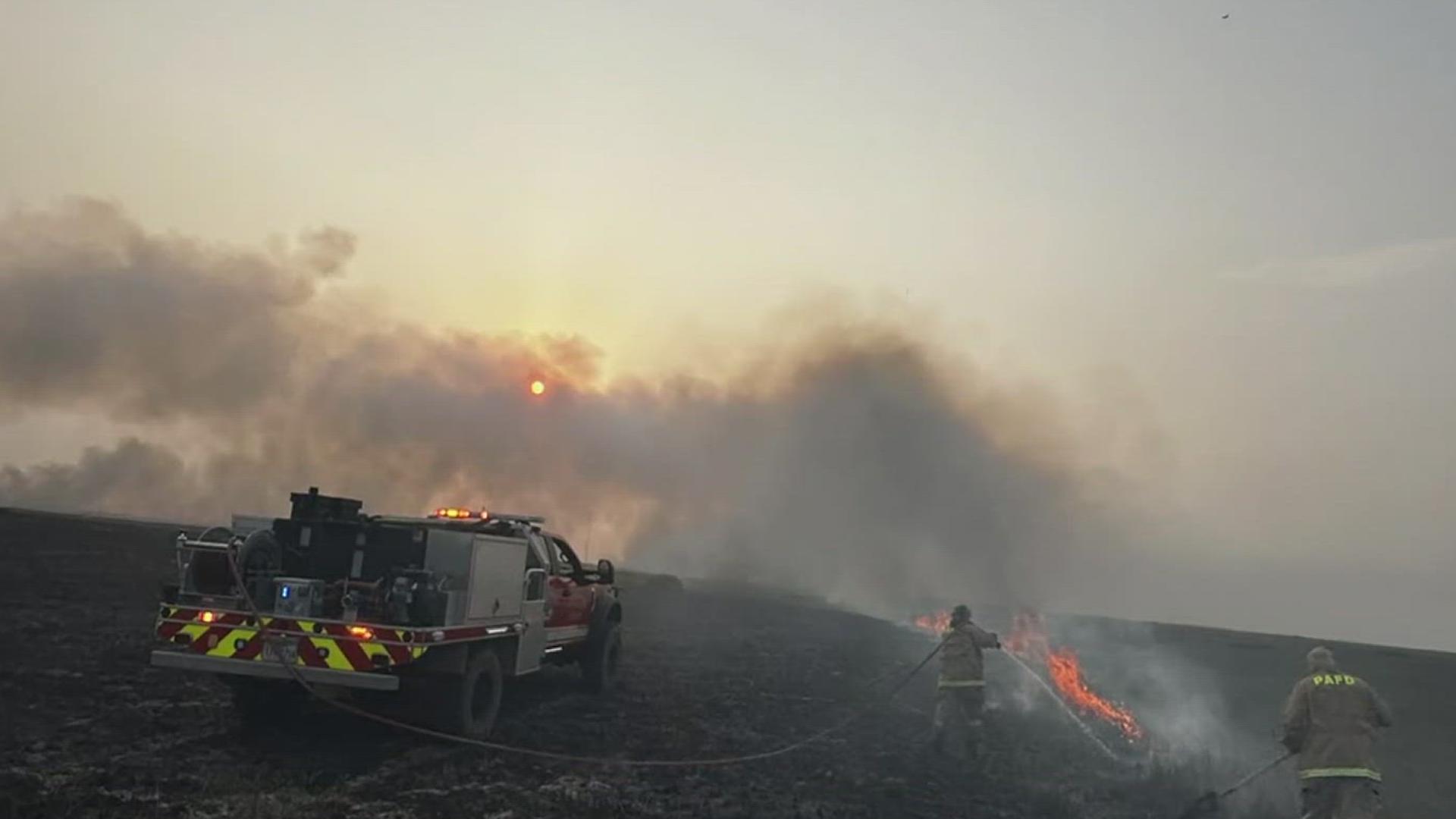CORPUS CHRISTI, Texas — Nueces County Emergency Services District No. 2 officers in Flour Bluff have to be ready at all times to fight fires, whether they break out just down the street or in heavy brush.
Physical fitness is only one of the keys to firefighters' readiness to go out and control fires when heat indices are topping 100 degrees.
"Starts with hydration," said Ronnie "Rambo" Vega, who's been a firefighter for 5 years. "It starts before the call even drops. You want to stay hydrated even before coming on shift. Stay hydrated on your days off and when you come into shift even more hydration.”
This ESD station was one of the departments battling wildfires that broke out on Padre Island over Memorial Day weekend.
Crews not only had to deal with the heat coming off those flames, but the hot and humid South Texas weather as well.
Vega and fellow firefighter Sergio Magana were busy getting all their equipment squared away on Monday morning after that Island fire, including the gear they wear to protect them from being burned.
They have two different jackets they wear depending on the fire: For a house fire, they wear a very heavy and thick jacket, but a brush fire calls for a lighter one that still affords protection.
Neither helps to keep them cool on one of our super hot summer days, so staying hydrated at all times helps them withstand the heat.
"Hydrating before, during and then after," Magana said. "Take breaks when you can. Watch out for yourself. Watch out for your fellow firefighter for the signs of heatstroke."
The National Institutes of Health says that 75 percent of firefighters experience heat-related symptoms, with 5 percent suffering those symptoms 20 times in a year.
That’s why these firemen say it’s good when back up from surrounding areas shows up to a fire.
”One you have multiple groups," Vega said. "You can give one group a rest and go recover. Go hydrate, go snack up if you need to, and you have another group that can go and take their place.”
All in an effort to keep these firemen cooled down and hydrated so they can continue to save lives and property.

